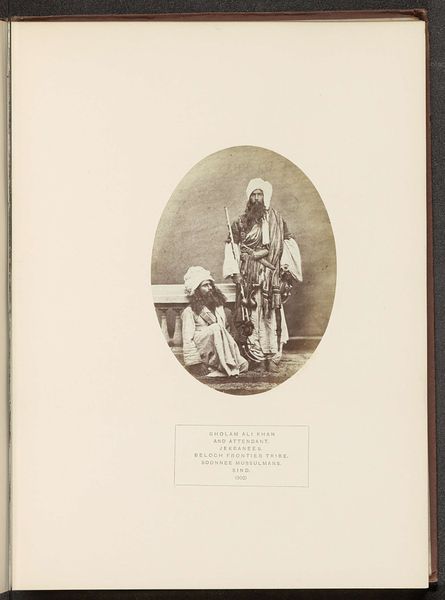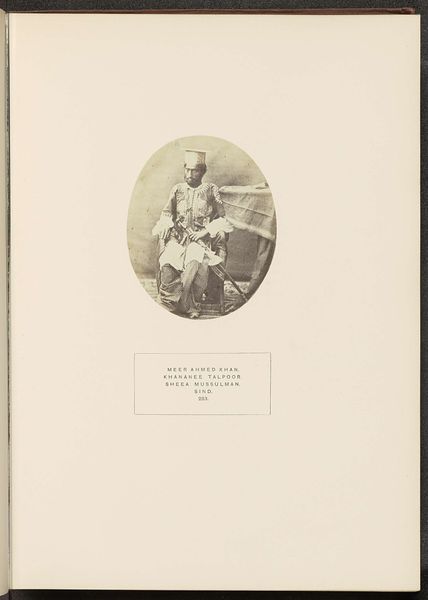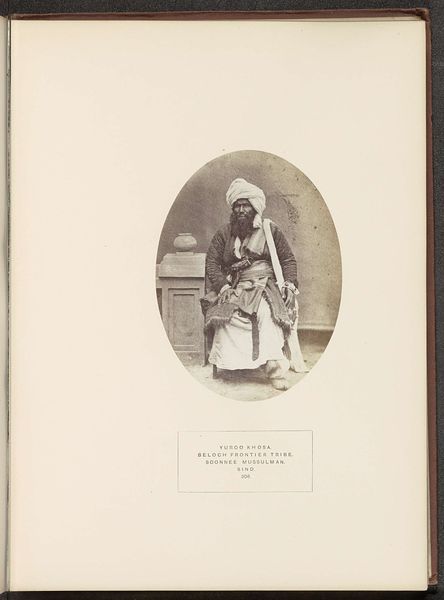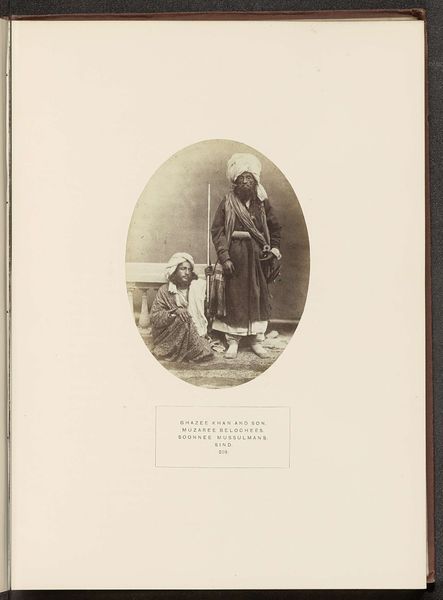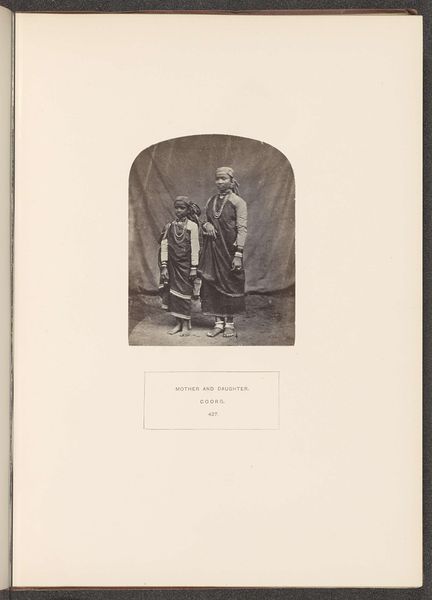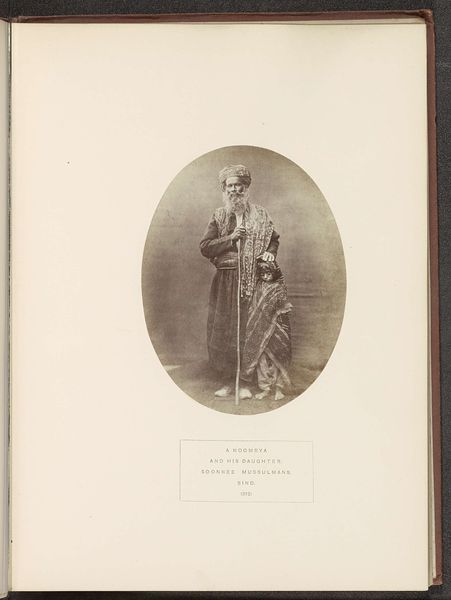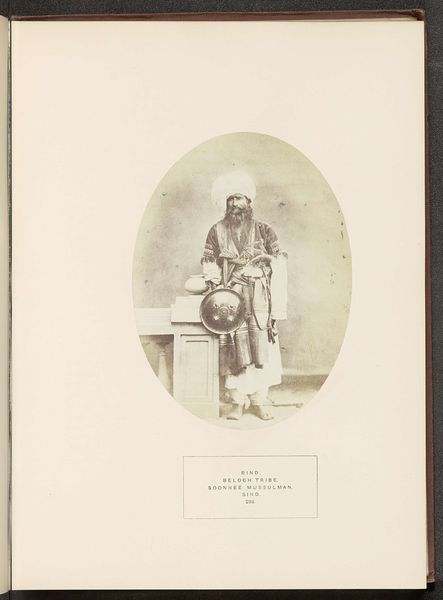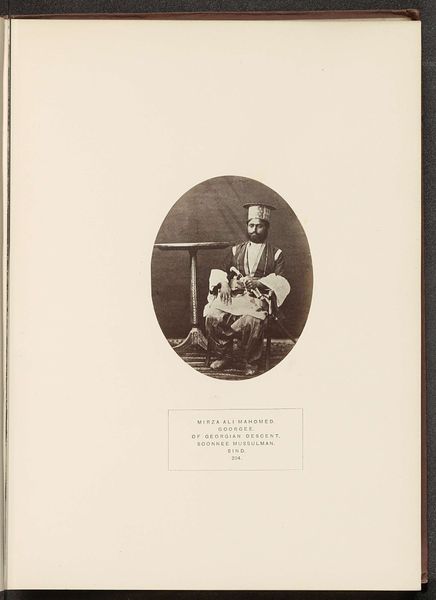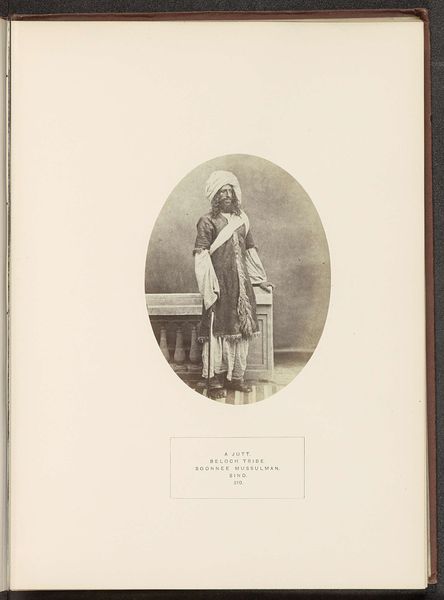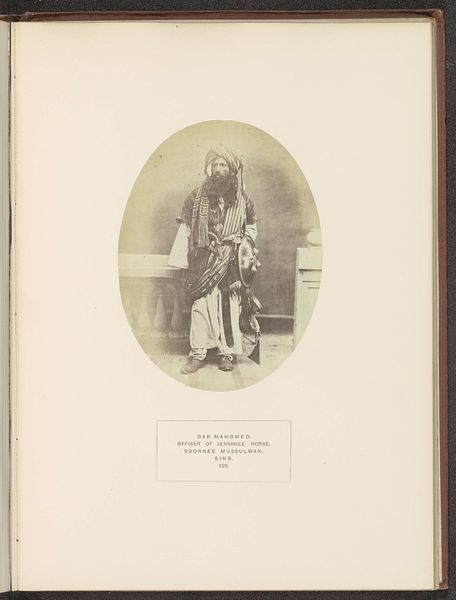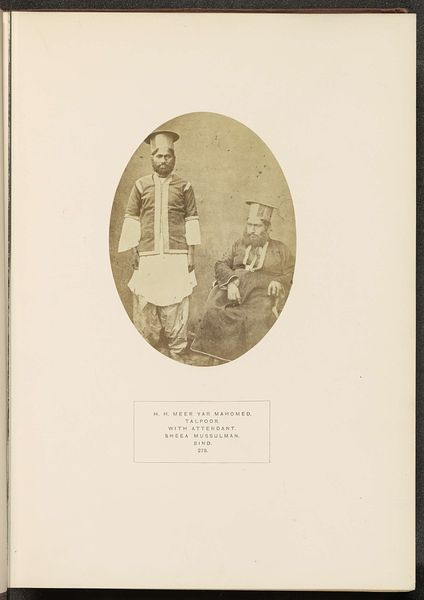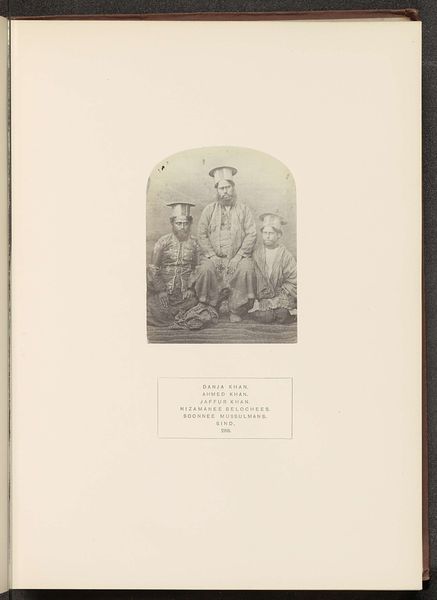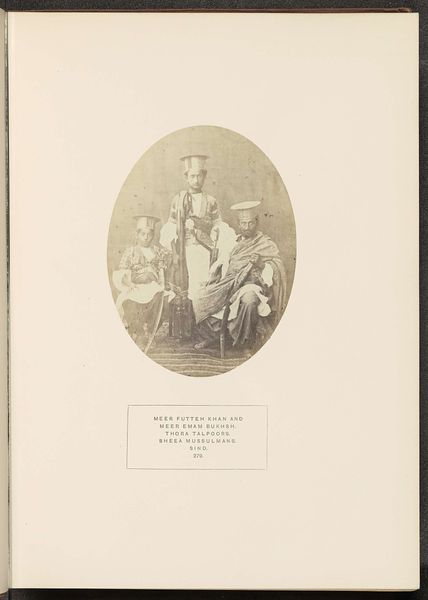
Portret van Door Mahomed, een man van de Jamali-stam, met wapens en een schild before 1872
0:00
0:00
photography
#
portrait
#
african-art
#
photography
#
orientalism
#
realism
Dimensions: height 147 mm, width 109 mm
Copyright: Rijks Museum: Open Domain
Curator: Before us, we have a fascinating photograph entitled “Portret van Door Mahomed, een man van de Jamali-stam, met wapens en een schild," or "Portrait of Door Mahomed, a man of the Jamali tribe, with weapons and a shield". The piece, captured before 1872 by Henry Charles Baskerville Tanner, provides a striking depiction of its subject. Editor: The immediate impression is one of strength tempered with a hint of vulnerability. The sepia tones evoke a sense of historical distance, yet his gaze feels quite direct, almost challenging. It is an intricate composition, balancing the man’s proud bearing with his array of weaponry. Curator: Indeed. What's compelling from my perspective is the photographic setting in its time. This work participates in a broader cultural phenomenon of the late 19th century, where portraiture became a potent tool for representation, both reinforcing and sometimes challenging societal hierarchies. Notice, however, the performative nature; the studio backdrop and props create an idealized representation that should invite critical assessment from the viewer. Editor: Exactly. Look at how the shield, the rifle, the turban – each becomes laden with symbolic meaning. The turban, for instance, not merely as headwear, but as an emblem of identity and social status. The weapons speak of protection, of a martial culture. It also carries a cultural echo of how people represented themselves to the world; it almost carries psychological significance, as if the man himself has embraced a form of visual rhetoric. Curator: That's quite insightful. The deliberate construction of this photograph reflects both the sitter's and photographer’s intent to project power and honor. Editor: Perhaps even to control how they’ll be seen through the sands of time. It provokes questions about how images shape collective memory and identity. What survives from a culture may shape a legacy whether good or bad. Curator: And the responsibility falls upon those like us to understand the socio-political narratives embedded in images like these, which may perpetuate biases but offer great insight at the same time. It is fascinating to reflect on these complexities, especially in our contemporary world. Editor: Yes, considering this image in our era adds layers of understanding and questioning. It has been an engaging dialogue.
Comments
No comments
Be the first to comment and join the conversation on the ultimate creative platform.
